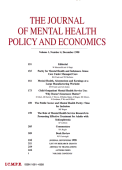Excessive alcohol use remains an important lifestyle-related contributor to morbidity and mortality in the U.S. and worldwide. It is well documented that drinking patterns differ across racial/ethnic groups, but not how those different consumption patterns would respond to tax changes. Therefore, policy makers are not informed on whether the effects of tax increases on alcohol abuse are shared equally by the whole population, or policies in addition to taxation should be pursued to reach certain sociodemographic groups.
To estimate differential demand responses to alcohol excise taxes across racial/ethnic groups in the U.S.
Individual data from the Behavioral Risk Factor Surveillance System 1984-2009 waves (N = 3,921,943, 39.3% male; 81.3% White, 7.8% African American, 5.8% Hispanic, 1.9% Asian or Pacific Islander, 1.4% Native American, and 1.8% other race/multi-race) are merged with tax data by residential state and interview month. Dependent variables include consumption of any alcohol and number of drinks consumed per month. Demand responses to alcohol taxes are estimated for each race/ethnicity in separate regressions conditional on individual characteristics, state and time fixed effects, and state-specific secular trends.
The null hypothesis on the identical tax effects among all races/ethnicities is strongly rejected (P < 0.0001), although pairwise comparisons using t-test are often not statistically significant due to a lack of precision. Our point estimates suggest that the tax effect on any alcohol consumption is largest among White and smallest among Hispanic. Among existing drinkers, Native American and other race/multi-race are most responsive to tax effects while Hispanic least.
For all races/ethnicities, the estimated tax effects on consumption are large and significant among light drinkers (1-40 drinks per month), but shrink substantially for moderate (41-99) and heavy drinkers (= 100).
For all races/ethnicities, the estimated tax effects on consumption are large and significant among light drinkers (1-40 drinks per month), but shrink substantially for moderate (41-99) and heavy drinkers (= 100).
Extensive research has been conducted on overall demand responses to alcohol excise taxes, but not on heterogeneity across various racial/ethnic groups. Only one similar prior study exists, but used a much smaller dataset. The authors did not identify differential effects. With this much larger dataset, we found some evidence for different responses across races/ethnicities to alcohol taxes, although we lack precision for individual group estimates. Limitations of our study include the absence of intrastate tax variations, no information on what type of alcohol is consumed, lack of controls for subgroup baseline alcohol consumption rates, and measurement error in self-reported alcohol use data.
Tax policies aimed to reduce alcohol-related health and social problems should consider whether they target the most harmful drinking behaviors, affect subgroups in unintended ways, or influence some groups disproportionately. This requires information on heterogeneity across subpopulations. Our results are a first step in this direction and suggest that there exists a differential impact across races/ethnicities, which may further increase health disparities. Tax increases also appear to be less effective among the heaviest consumers who are associated with highest risk.
More research, including replications in different settings, is required to obtain better estimates on differential responses to alcohol tax across races/ethnicities. Population heterogeneity is also more complex than our first cut by race/ethnicity and needs more fine-grained analyses and model structures.
Request Reprint E-Mail: ran@rand.org
